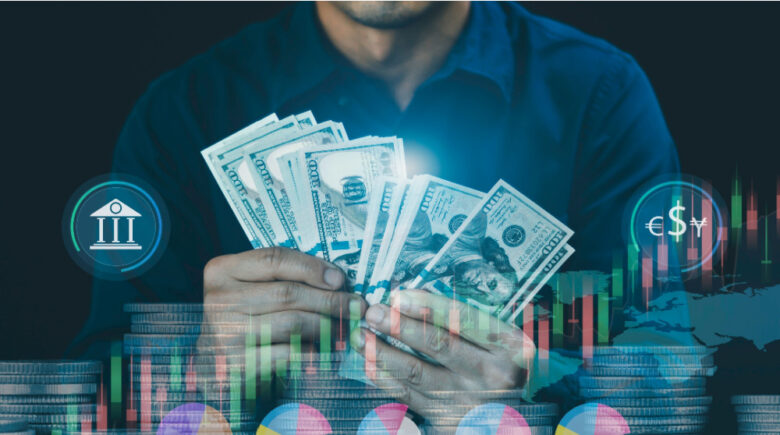Lately, it feels like every news headline is about another inflation spike. The groceries that once cost $100 now set you back $400. Affordable housing, once manageable on a single income, seems like a distant memory. Inflation is gripping our economy, yet many people aren’t exactly sure what the term even means. As we dive deeper, we’ll explore what inflation is, how it got this bad, and whether there’s any hope for relief in the future.
Understanding inflation can help put into perspective why it often feels like we’re always falling behind financially. It can also empower us to navigate the world around us more effectively. So, what exactly is inflation?
What Is Inflation?
At its simplest, inflation refers to the process of things getting bigger, expanding in size. In economic terms, though, inflation describes the rise in prices over time. It’s a way of understanding how the cost of goods and services has increased compared to the past.
Take the housing market as an example. In 1990, the average home cost around $123,000. Today, buying a home often falls between $450,000 and $500,000—a staggering increase. This kind of price jump is a clear indicator of inflation at work.
Inflation is a major reason why many families struggle to make ends meet. It’s not just homeowners losing jobs or finding it difficult to stock their refrigerators; inflation is also a key driver of the economic instability we’re facing, with no immediate end in sight.
Why Does Inflation Happen?
A common question is: why does inflation occur, and why have prices surged so much in recent years? The answer is complex. Over time, prices tend to rise as the demand for goods and services increases. When demand exceeds supply, prices go up.
Take gasoline as an example. With more cars on the road than ever before, the demand for gas has skyrocketed. To meet that demand, more fuel needs to be produced, which pushes up prices. This is why the price of gasoline, which was less than a dollar in the 1980s and early ’90s, is now far higher.
Why Is Inflation So High Right Now?
Over the past five years, our economy has been under immense strain. In 2020 and 2021, inflation hit unprecedented levels. As the demand for goods surged, job opportunities dwindled. During this period, the U.S. was spending far more money than it was earning, leading to a supply shortage of goods while employment opportunities collapsed.
The government and the economy are still trying to recover from this extended period of disruption. Unfortunately, prices remain at record highs, and relief seems elusive.
Will Inflation Ever Go Down?
A complete reversal of inflation is unlikely. However, the goal is to make prices more manageable. To do that, wages need to reflect the real cost of living. Ideally, in time, we’ll reach a point where fewer Americans are struggling to afford basic necessities.
There are several steps that need to be taken to achieve economic relief and recovery. Unfortunately, the demand for goods remains so high that we won’t likely see prices decrease or even stabilize soon. However, tax cuts and lower interest rates could help ease the financial burden on American households.
What Can Be Done About Inflation?
As individuals, there’s little we can do to lower inflation directly. For now, these prices are here to stay. It will take coordinated efforts on an economic level to bring prices down.
Hopefully, in the coming years, wages will rise to keep pace with inflation. A livable wage could significantly improve the financial outlook for many people and help alleviate some of the poverty we see today.
Inflation: A Price Hike
While the current inflation crisis shows no signs of easing, understanding why prices are rising can help us adapt. Knowing the factors that contribute to inflation helps us adjust our expectations, even if we can’t control the prices themselves.
With any luck, the next few years will bring some price relief, or at least an increase in wages that matches the new cost of living.
Lately, it feels like every news headline is about another inflation spike. The groceries that once cost $100 now set you back $400. Affordable housing, once manageable on a single income, seems like a distant memory. Inflation is gripping our economy, yet many people aren’t exactly sure what the term even means. As we dive deeper, we’ll explore what inflation is, how it got this bad, and whether there’s any hope for relief in the future.
Understanding inflation can help put into perspective why it often feels like we’re always falling behind financially. It can also empower us to navigate the world around us more effectively. So, what exactly is inflation?
What Is Inflation?
At its simplest, inflation refers to the process of things getting bigger, expanding in size. In economic terms, though, inflation describes the rise in prices over time. It’s a way of understanding how the cost of goods and services has increased compared to the past.
Take the housing market as an example. In 1990, the average home cost around $123,000. Today, buying a home often falls between $450,000 and $500,000—a staggering increase. This kind of price jump is a clear indicator of inflation at work.
Inflation is a major reason why many families struggle to make ends meet. It’s not just homeowners losing jobs or finding it difficult to stock their refrigerators; inflation is also a key driver of the economic instability we’re facing, with no immediate end in sight.
Why Does Inflation Happen?
A common question is: why does inflation occur, and why have prices surged so much in recent years? The answer is complex. Over time, prices tend to rise as the demand for goods and services increases. When demand exceeds supply, prices go up.
Take gasoline as an example. With more cars on the road than ever before, the demand for gas has skyrocketed. To meet that demand, more fuel needs to be produced, which pushes up prices. This is why the price of gasoline, which was less than a dollar in the 1980s and early ’90s, is now far higher.
Why Is Inflation So High Right Now?
Over the past five years, our economy has been under immense strain. In 2020 and 2021, inflation hit unprecedented levels. As the demand for goods surged, job opportunities dwindled. During this period, the U.S. was spending far more money than it was earning, leading to a supply shortage of goods while employment opportunities collapsed.
The government and the economy are still trying to recover from this extended period of disruption. Unfortunately, prices remain at record highs, and relief seems elusive.
Will Inflation Ever Go Down?
A complete reversal of inflation is unlikely. However, the goal is to make prices more manageable. To do that, wages need to reflect the real cost of living. Ideally, in time, we’ll reach a point where fewer Americans are struggling to afford basic necessities.
There are several steps that need to be taken to achieve economic relief and recovery. Unfortunately, the demand for goods remains so high that we won’t likely see prices decrease or even stabilize soon. However, tax cuts and lower interest rates could help ease the financial burden on American households.
What Can Be Done About Inflation?
As individuals, there’s little we can do to lower inflation directly. For now, these prices are here to stay. It will take coordinated efforts on an economic level to bring prices down.
Hopefully, in the coming years, wages will rise to keep pace with inflation. A livable wage could significantly improve the financial outlook for many people and help alleviate some of the poverty we see today.
Inflation: A Price Hike
While the current inflation crisis shows no signs of easing, understanding why prices are rising can help us adapt. Knowing the factors that contribute to inflation helps us adjust our expectations, even if we can’t control the prices themselves.
With any luck, the next few years will bring some price relief, or at least an increase in wages that matches the new cost of living.




